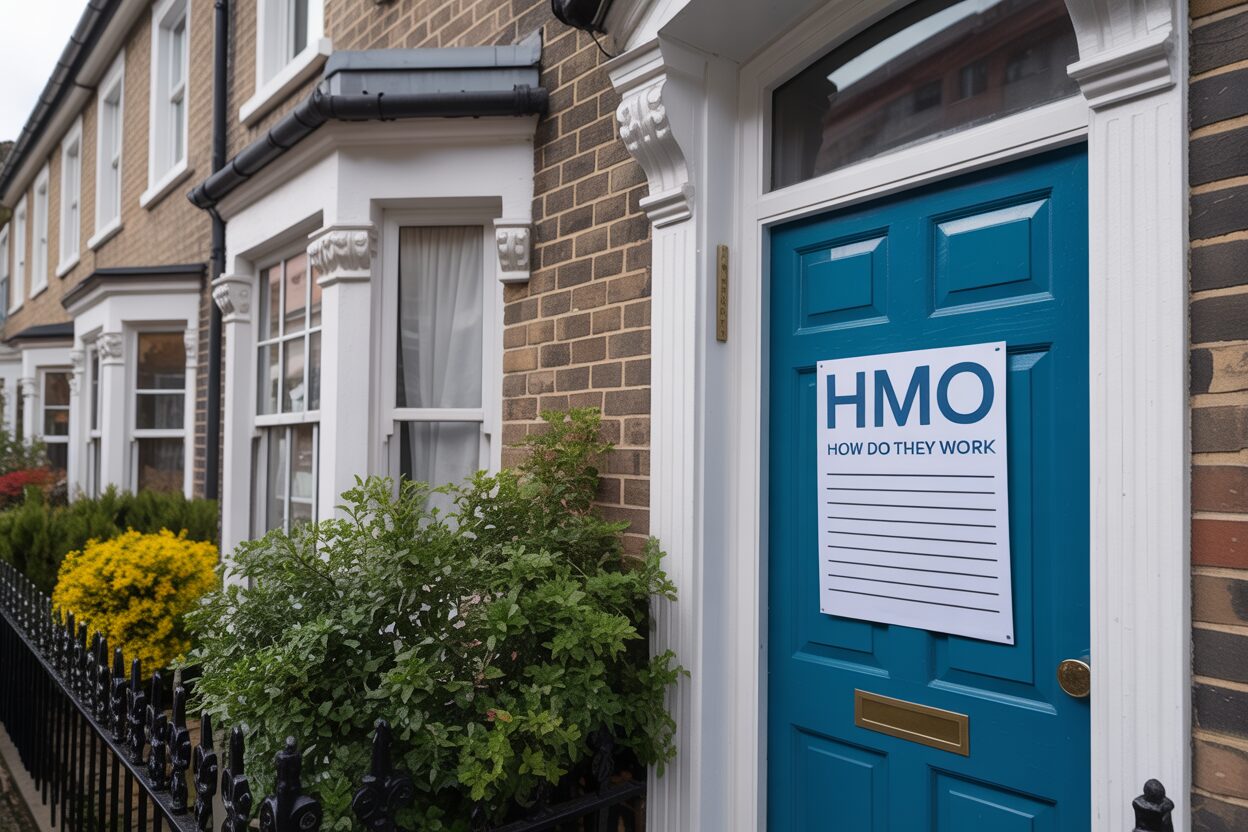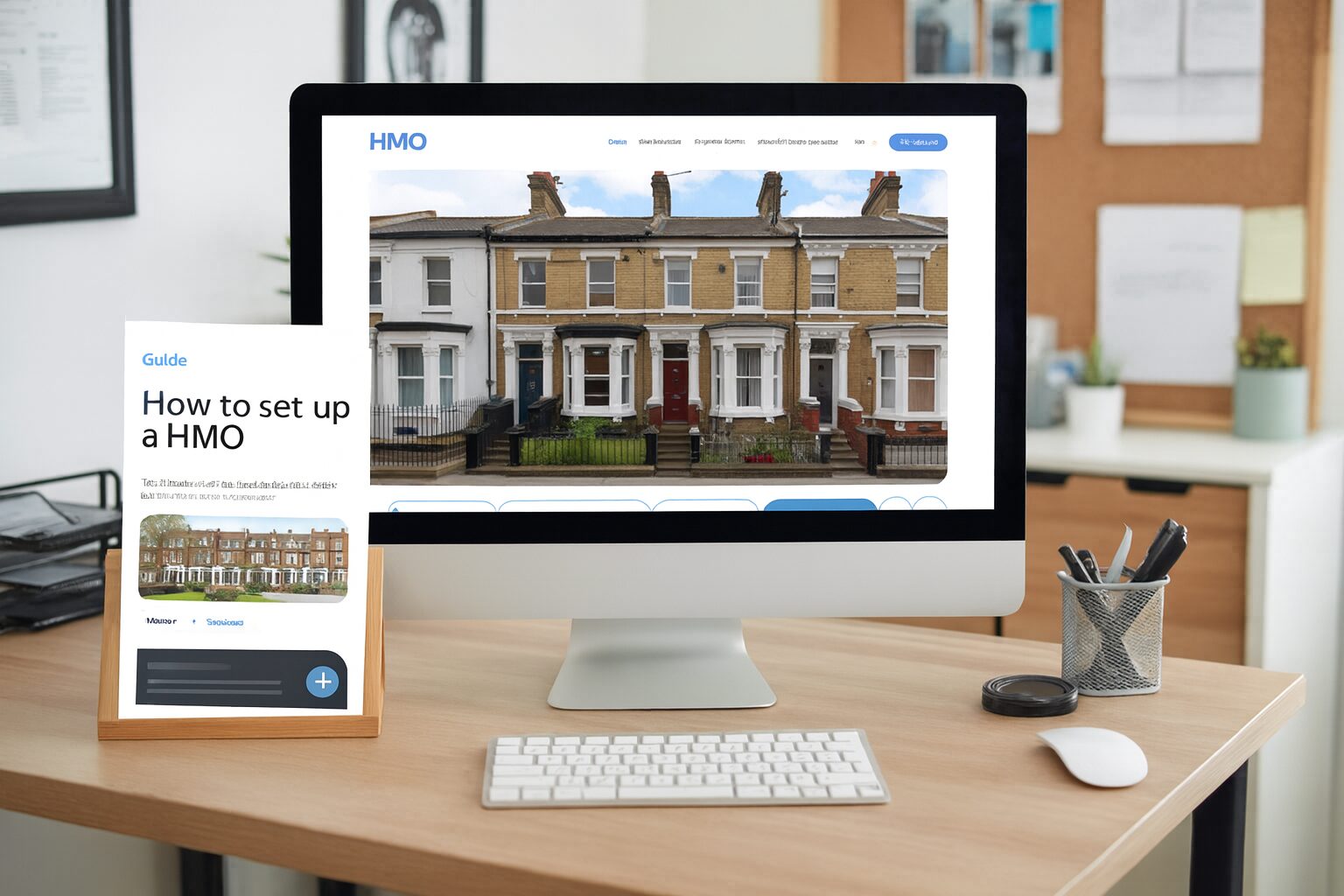
According to Shedyt, there are 6,000 to 7,000 property developers in the UK. Look beyond those registered at Companies House and there’s likely to be 100,000s more. Property developing is popular for two important reasons. First, it gives you rental income today while your tenants pay off your mortgage. Second, you start a portfolio that, over time, builds long-term value and wealth. If you’ve ever wondered how to get into property development in the UK or how to get into property investment, this article is for you.
We take you through the six important steps from finding a property to developing it and making money from it.
Building a successful UK property development business: a simple ‘how-to’ guide
Treat each property project you start on as a business in its own right. At the outset, be clear on exactly what it is you want to achieve. Develop your plan and stick to it and follow the guidelines below. At the end, you’ll own a valuable asset you can sell or rent out.
Step one: decide on your first project
If you want to become a property developer, pick a simple, low-risk project for your first few investments. Steer well clear of projects that require either major structural work or planning permission.
There is one main reason for this. Lenders are wary of newer developers. If you’re new, many will baulk at the idea of funding a heavy refurb or planning-led project. So, give them a simple, low-risk deal they can say yes to.
Best first-time developer project types
The best projects for newer developers are the types you see on “Homes Under The Hammer”, like:
- Quick flipping: This is buying a structurally sound property that’s cosmetically tired and doing it up to sell on. Your profit comes from the proceeds of the sale.
- Buy-to-let: Turn an existing property into a property tenants will rent from you.
- HMOs: HMO stands for House in Multiple Occupation. In law, it’s a property occupied by three or more people forming more than one household who share, in nearly all cases, basic amenities (kitchen, bathroom or toilet).
Whichever option you choose, make sure the work you need to do is not complicated and time-consuming.
Setting a target
At this early stage, decide what your project will be and the end result you want. Write it down as a single sentence to keep it as clear and simple as possible. That could be:
- Light cosmetic conversion of a 4-bed house into a student HMO with a £45,000 build budget, targeting £35,000 profit on resale.
- Light cosmetic conversion of a 4-bed house into a student HMO with a £45,000 build budget, aiming for £2,000 monthly rent.
Appointing your first team member
The last important key task during step one is befriending a broker.
Brokers are your best friend because they know:
- They can find lenders for new developers: Lenders trust them because brokers only put deals to them that match their criteria. Brokers are far more likely to find a good deal than you are on your own.
- How to “package” a deal: They prepare your application in a way that suits their systems.
Find a broker you like and then follow these three rules:
- Be absolutely honest with them about your lack of a track record.
- Don’t hold anything back about a deal, even the bad stuff.
- Most importantly, take their advice seriously and respect their time.
Introduce yourself to your broker and tell them about the projects you have in mind and how much cash you personally have to spend on it.
Getting ready to buy
Ask your broker if they can set up an Agreement in Principle (AIP) for you. An AIP is an early confirmation from a lender on how much you can borrow and on what terms. This is not a firm offer of a loan but an offer based on the basic checks a lender performs.
With an AIP:
- You know your budget: It confirms how much a lender will advance to you for your project.
- You waste fewer viewings: You filter out properties and project types lenders won’t fund.
- You negotiate better: You can show sellers and agents you’ve got a lender’s backing to go ahead.
Later in this article, we’ll tell you the types of finance brokers can secure for your project.
Step two: choosing your property
Light refurb buy-to-lets, smaller HMOs and holiday cottages are great, low-risk starter options. They are the best way to start your career or business in property development.
For this article, we’ll use this worked example: turning a four-bed C3 family home into a C4 student HMO. This is a flip so your goal is to improve an existing property and sell it straight away.
HMO Architects note:
We’re going to assume:
- Maximum £45,000 build budget
- Maximum £4,500 contingency budget (a reserve you set aside for unexpected costs, such as hidden defects, price rises or delays)
- Maximum £12,000 for finance costs and £6,000 in professional fees
- Target profit is £35,000
- Deposit to buy the property is ready to go
- No planning permission needed (always check with the local planning authority to be sure).
HMO Architects tip: In England, a C3 to C4 small HMO conversion is usually a permitted development requiring no planning permission. Be careful not to choose a property under an Article 4 Direction or whose past planning conditions require you to apply planning approval. [Related article: What Is Sui Generis Planning? (Secrets Of A Great Application)]
- Minor internal works needed (like bathroom and kitchen refreshes rather than full refits, rewires and so on)
- No alterations to the exterior of the property.
Finding your property
To choose the right property for your project, follow these stages:
- Choose a target market: Decide on a target tenant. Think about the characteristics of a property they’d happily pay to live in. Don’t skip this step otherwise you risk buying in the wrong place or spending money on specs your tenants don’t want or need.
In the case of a student HMO, tenants want to be close to campus and the city centre so look for properties in those areas. They want a nice, clean, modern house with some, but not all, of the best mod-cons. - Find out the ‘ceiling value’: Ask estate agents about ceiling values in your chosen area. That’s the maximum price that properties will sell for on a street. If you can’t buy and renovate the property making the target level of profit you’ve set yourself for less than the ceiling value, find another property.
- Update your broker: Tell your brokers about the type of property you want to buy, the area it’s in and the type of work you want to do. Explain the costs you’ll incur and how much money you’ll make. Find out if there are certain types of property lenders won’t finance like non-standard construction or flats above shops.
HMO Architects note: The type of finance your broker will try to arrange for a first-time developer project is probably a light refurbishment bridging loan. The lender will advance you up to 65% of the value of the property. This means you need a deposit of 35%. They’ll fund up to 100% of the build costs.
You don’t get the building costs in one lump sum. They pay you an initial amount and then follow-on amounts when you reach an agreed milestone like finishing the kitchen or plastering. When you tell them you’ve hit a milestone, they send an independent monitoring surveyor to your site. They confirm that you’ve completed it to the standard required and request the lender to release the next tranche. You only pay interest on funds drawn, not the approved limit.
You don’t make any monthly repayments on a bridging loan. Instead, you repay the entire loan plus interest in one go at the end. We’ll cover how you do this later in the article.
Property search action plan
- Start looking for properties: Focus only on properties in the areas your target tenants will like.
- Book viewings: Visit the properties that you’re interested in. Bring in an architect, HMO consultant, or experienced builder with you. Ask them if the property works or can be made to work under HMO rules for legal bedroom size, shared space and fire safety routes. This is an opportunity to find out whether you could do the work needed in a property within your £45,000 budget.
- Rule out properties that fail: Drop anything that fails on size, layout, compliance or profit margins.
- Shortlist the best three or four properties: Select the options under the ceiling price that leave the greatest profit after your build costs and fees.At this stage, ask your broker for a quick desktop valuation on each remaining candidate. This is a low-cost way to check if a lender’s value is likely to agree with the ceiling values you’ve been given.
- Negotiate hard: Push sellers for the best deal possible on each property. Use comparables and the cost of works to get asking prices down. Choose the option that provides the biggest profit, as long as it’s under the ceiling price for its area. When you’re close to a deal, show the seller proof of deposit and your AIP. It strengthens your case when asking for a discount.
- Complete on the purchase: With a deal agreed, get your broker to finalise the lender’s offer and go to legals. Instruct your solicitor and get them to arrange searches (local authority, environmental, water and drainage). At the same time, commission a RICS home survey to check for any hidden surprises before the exchange. Arrange buildings insurance to start from the day you take ownership, as most lenders require it. Manage all the parties involved to get to completion as fast as possible. Switch to landlord insurance before your tenants move in. Manage all the parties involved to get to completion as fast as possible.
The property you’ve bought: example for this article
For the purposes of the article, we’re going to assume you’ve bought the property. It’s a light refurbishment job but you intend to install a new boiler and re-pipe the property to (x). The property has seen better days so you’re replacing the fuse board and installing a new consumer unit.
They don’t require planning permission but they do mean you need routine Building Control sign-off.
HMO Architects note: The bridge facility your broker arranges funds the property purchase. The next step is working on an agreement for the drawdown schedule for your build costs. That’s the focus of our next step.
Step three: create your project one-pager
You’ve completed the purchase. Now you have a short window before work starts to get everything in place. The best way to approach this is to break it into clear, manageable tasks and tackle them in order.
Here’s the best way to do this:
- Confirm your project scope: Write a one-line scope at the top of your plan. Stick to it. Example: “Light refurb for student HMO; install new boiler and re-pipe to (x); replace fuse board with a new consumer unit; minor kitchen/bath refresh; redecoration. No structural work. No planning.” This is your north star and protects you from scope creep. Resist any temptation to course-change because that kills profit.
- Design the layout: Bring in your architect, HMO consultant, or experienced builder from step two again. Expand on your ideas from the initial viewings on how you’ll improve the property. They can advise you on cost-effective finishes that appeal to your target tenants. Confirm where the boiler will sit, how the flue will route, where the condensate will discharge to a lawful drain, how the radiator runs will be set out, and where you’ll install any extract fans. Ask for a simple measured sketch or drawings if the council (Building Regulations or HMO licensing) or lender needs to see them.
- Assemble your team: You’re going to need help from different experts at different stages of the build. Line up your architect to take care of Building Regulations, licence packs and interior design and layout duties. You can ask your architect or build to be your project manager so they run the build site or you. If you choose more than one on-site contractor, you’ll need to appoint a Principal Designer and Principal Contractor. They can be your architect and builder. Add a Gas Safe engineer and a Part P electrician to deliver and certify the boiler and consumer unit. Last but not least, decide on a property solicitor for contracts and disputes and an accountant for tax and business structure matters.
- Governing contract: Your builder or project manager will write up a simple contract that sets out the rules for the job. This will often be an amended JCT Minor Works or Home Owner/Occupier contract template. This tells you what is and what’s not included in the build. It also includes a fixed start date, finish date and payment schedule. Other key points you’ll find in it are retention (how much payment you hold back at the end) and the defects period (how long they must come back to fix problems). Review the contract thoroughly before you sign it off. Look out for vague wording or potential hidden costs that could lead to a dispute later on.
- Get written quotes: Ask your project manager to cost the work based on your agreed design. They’ll price in labour, plant, materials and their own specialist tradesmen for different parts of the build. Make sure they itemise every element and that the total is equal to or less than your budget. It should also include a draft programme (the first version of the project timeline). If the price comes in lower than your budget, you have a choice. You can bank the savings, add it to your contingency fund or reduce the size of the loan. If they price it higher, scale back your plan until you get it back under your financial control.
- Timeline plan: Now it’s time to move from the draft programme to the final, agreed timeline. The timeline needs to feature the site start date, the main build milestones, the snagging phase and the target completion date. Include key inspection points such as first-fix pipework, the consumer-unit changeover, and final commissioning. Share with your architect, builder and broker so everyone works to the same deadlines.
- Logistics plan: This sets out when specific labour and material will arrive on site. Order longer-lead items such as the boiler, consumer unit, radiators and fans, and plan any gas and power isolations. This avoids delays and keeps the build moving on schedule.
- Change control (set the rule now): Never agree to changes on a handshake or verbal agreement. Write each change down, get a price for it, and make sure the project manager signs it before carrying on with the work.
- Confirm finance setup and go live: Share your final drawings, quotes and programme with your broker or lender. Before starting work, check what the lender needs to transfer the first tranche, like insurance, a Building Notice (or Competent Person Scheme notifications) or an HMO licence. Then, get written confirmation your facility is active and you can draw down the capital. Also ask for confirmation of the project milestones and how long each drawdown will take once the inspector signs the work off.
- Site set-up and notices: Let Building Control know before work starts. Submit a Building Notice and agree an inspection schedule with Building Control that matches your programme. Sort out skips, parking permits, waste carrier details and site insurance. Although unlikely on smaller projects, you may also need temporary site utilities such as water or electricity.
- Pre-start check: Do one last run-through of the plan. Make sure everything still stacks up and every team member is clear on what they need to do and when. Check your contingency budget covers all the likely risks you might face. If there are any gaps, tighten them up now. That’s because once you give the go-ahead, you’re committed to the build.
HMO Architects note: If you need to change the plan later and that affects the design, cost or timeline, write it down. Get everyone to agree in writing before the builder carries on with the work.
Step four: running the build
As mentioned above, you can appoint a project manager to be your day-to-day lead on site. Their job is to coordinate subcontractors and keep everything on time when work is underway. They report directly to you so you still get to make the key decisions on project progress.
For this article, we’ll assume you’re using a project manager on your student HMO project. Here’s what you can expect:
- Site kickoff: Hold a meeting before work starts. Go over the schedule, drawings and inspection dates. Confirm the isolation plans and the Building Control inspection points. Agree site access, deliveries, waste and neighbour arrangements. Also, make clear to everyone the process for changing the plan.
- Cost control and payments: Your project manager tracks every single pound spent. They continuously compare the ongoing spend against the original quote. This means they can alert you to overruns like rising material prices early. When you visit the site, review completed stages such as the first-fix pipework, the consumer-unit changeover, and the boiler commissioning before authorising payment. This approach means you only pay for the best results. It’s also a highly effective way of protecting the contingency fund against surprise costs.
- Quality assurance: On-site managers make sure the job follows your written spec to the letter, right down to the makes, models and finishes. Pressure-test the new pipework. Flush and dose the heating system in line with BS 7593. Label all circuits at the new consumer unit. They keep photo logs of hidden elements like insulation, pipe runs and fire collars so you have proof later for warranty claims. They also book independent tests you need, such as fire alarms or electrics, and check work in real time to cut down on snags at the end.
- Compliance and inspections: They arrange Building Regulations inspections at key stages so inspectors can sign off before work gets covered up. This avoids delays like having to remove plasterboard to check insulation. They also make sure fire-safety features such as doors, closers and alarms meet the rules. In addition, they prepare the HMO licence pack with scale plans, an amenities schedule and management arrangements. You get to check each submission, keep a copy, and sign it off before it goes to the council. Ensure Gas Safe commissioning and Building Regulations notification for the boiler, and Part P electrical certification and Building Regulations compliance for the consumer unit. Call Building Control before covering concealed work if they wish to inspect it.
- Health and safety: The project manager acts as Principal Contractor (CDM 2015) under UK law. That means they’re responsible for site safety and preparing RAMS (risk assessments and method statements). Make sure you also appoint a Principal Designer for pre-construction H&S (this can be your architect). They keep the site tidy and organise safe waste removal. Messy sites are unsafe, slow progress, and can trigger enforcement by the HSE. You also need to check the Principal Contractor and Principal Designer have up-to-date insurance before work starts.
- Lender liaison: On-site managers keep the build in step with the lender’s drawdown schedules. They do this by lining up each site milestone with IMS (independent monitoring surveyor)/valuer inspection dates so the next tranche comes through faster. If they spot a potential delay, they can rework the schedule to catch up. You can get them to take an inspector or valuer around the site, answering their questions. Your project manager also prepares an evidence pack with photos, invoices and the updated programme of works.
- Local site: Project managers arrange council/highways permits for scaffolding, skips and parking bays. They also agree working hours to minimise disruption and noise to neighbours. Neighbours can approach them on issues like access, deliveries and general disruption. They keep records of each complaint and how they resolve them. You only need to step in if a dispute escalates or needs a personal touch to calm things down.
- Reporting: You’ll get a weekly report on site progress. That will include information on budget, emerging risks and areas where they need you to make a decision. Reports will also feature previously flagged issues, photos and updated timelines. The reports themselves are generally short and sweet meaning you can generally review them and answer any questions quickly so it keeps the project moving.
- Exit preparation: Your project manager pencils in dates for the final clean, photography and meter readings. They draft the estate agent’s brief if you’re selling or prepare a letting advert if you’re renting. If you plan to refinance, they build a valuer pack with before/after photos, the works schedule, invoices, rental evidence, local comparables and ASTs or agent letters. This is just groundwork as the next stage only goes live after project sign-off.
Step five: exit and wrap up
You’ve reached the end of the build. Now it’s time to complete by either selling the property or renting it out. Here’s how to close the project properly:
- Pre-completion checks: Walk the site with your builder and list every snag you see. Agree deadlines for fixing each one and record who’s responsible. Check all the meters are working, take their readings and collect all the keys. Make sure all the manuals and certificates you need for compliance, safety and handover are ready. This includes Gas Safe, EICR (electrical), Building Regulations sign-off, warranties and guarantees, and the EPC. Only sign off completion when the property is safe and usable, statutory sign-offs are in place, and you’re comfortable with the remaining snag list. This saves you from nasty surprises when you try to sell, let or refinance.
- Practical Completion & retention: Practical Completion is the stage when you can use the property. There still may be minor snags to sort out, but the building is safe and functional for its intended use. Confirm completion in writing once you’re happy the builder has addressed the main snags. Pay the builder the final stage payment but hold back the agreed retention (this is usually 2–5%). Start the defects period clock ticking from that date and record the retention release date in your diary. Only release what’s remaining once you agree that the builder has completed all of the listed fixes.
- Compliance pack: Build one folder that holds everything together. That includes final drawings, Building Regulations completion certificates and product/installation warranties. Add test sheets for electrics and gas, your fire strategy, appliance manuals and a full photo record of the works. Add certificates from accredited bodies like FENSA (windows), Gas Safe and NICEIC, plus the EPC. For our student HMO project, that would include the HMO licence pack (or proof of a valid application where applicable). Keep both digital and paper copies so you can distribute them easily to agents, buyers, lenders or the council.
- Costs locked (final account): Compare what the builder quoted at the start to what you actually spent. Write down every change, the reason for it and whether you paid more or got money back. Sit down with your builder and agree on the final figure in writing. Once you both sign it, treat the account as closed so no new charges can appear later. This is important because it stops disputes and gives you a clear record of the true cost of the project
- Exit strategy: At this point, you need to put into effect your exit strategy. If your broker arranged a light refurbishment bridge loan (or any type of bridge or development loan), you need to repay it. As mentioned earlier, you make no monthly repayments while the project is live. Instead, you repay it in one go at the end.
If you’re selling up, you’ll repay the loan with receipts from the sale on the open market.
If you’re hanging on to the property to rent it out, you take out a buy-to-let mortgage and use those funds to redeem the bridge, then collect rent and meet the monthly mortgage payments.
For lettings in England, give your tenants all the prescribed documents. They are the How to Rent guide, EPC, gas safety, and EICR. Complete the Right to Rent checks before handing over the key to a tenant and protect their deposit within 30 days.
For HMOs, make sure the licence (or a valid application/Temporary Exemption Notice) is in place before tenants move in. Finally, arrange landlord/HMO insurance so you’re fully covered from day one. - Defects period management: Run a snag sweep about 30 days after Practical Completion and another just before the retention release date. Walk through the property and list every issue. Take photos of every snag and set the builder fix-by dates. Keep monitoring progress on-site and chase your builder until they resolve every snag. Release the retention money only when every job is complete and documented.
- Tax preparation: Make sure your SDLT return/payment at purchase was filed correctly and keep the evidence. Book time with your accountant post-completion to handle CGT if you’re selling or Income Tax if you’re renting out. Get help with investment strategies, CIS, VAT, and filing deadlines.
Step six: review and prepare for the next project
Compare your original plan against how the project played out in the real world. How close were you to your time, cost and profit/rent targets?
Write down what caused delays in your build, like slow tradesmen, supply squeezes or waiting for staged drawdown payments. Think through how you’d stop these issues from repeating the next time around.
Keep copies of the templates that you found most helpful. Think back to the weekly reports your project manager gave you. On following projects, how could you make the meetings more productive?
Make a list of trades you’d hire again and those you wouldn’t, with notes on why.
Start your own personal developer playbook and, after each project, add your observations and update your tactics. Think of it as a “do this, not that” guide so your next project starts with proven systems and avoids past mistakes.
If you’re keen to invest in your next future project and you’re renting out your last property, speak to a broker. See if you can release equity in the increased value of the property you’ve developed to find a deposit for the next project.
HMO Architects: partners on your next property development project
Property development is a proven way of building long-term wealth and reliable passive income. Every project you take on will present a number of different challenges you have to overcome. But as you complete each subsequent one, you build both experience and confidence for your next development.
For your first project, make sure you build the best possible team around you. HMO Architects has assisted 750 investors and developers, new and experienced, bring their projects to life.
Here are typical first-time developer projects our clients have had success with:
- Beaufort Ave, London (4 units): A “first-deal friendly” conversion of a 3-bed terrace into a 4-bed HMO with no extensions, lofts or en-suites. We reconfigured the plan to meet HMO standards and lifted the EPC to C, delivering a quick, low-risk route into development. Great returns too with the property price rising from £550,000 to £900,000 and the monthly rent quadrupling from £1,400 to £5,600.
- Earls Crescent, London (4 units): A simple, cost-controlled semi-detached conversion for a charity client. It’s a great example for newer developers of keeping their project scope tight while still improving value and income. The value of this important asset for the charity rose from £550,000 to £750,000 and their monthly income went up 266% to £4,800.
- Grange Road, London (4 units): Budget-led HMO upgrade using “design for all” principles, including wider corridors, adjusted doorways and an additional rear ramp to improve accessibility. Minimal disruption, fast programme and inclusive design principles contributed to compelling starter project.
We provide a start-to-end service, including:
- Investment advice: Get tailored advice on how to build and scale your property portfolio. Personal advice from Ryan Windsor, who has worked on over 2,200 projects and started building his own extensive property portfolio when he was 17. Ask him about our portfolio building service and joint venture opportunities.
- Feasibility study: Benefit from an expert-led breakdown of your pre-buy and design renovation options for just £197+VAT. We can even produce comprehensive reports on the viability of your scheme.
- Planning permission experts: We have experience in gaining planning permission for our clients across 200 councils.
- Interior design and exterior planning: Our architects balance investment-led design with tenant appeal to maximise your yield and minimise void periods.
- On-site management: Appoint us as your Building Regulations Principal Designer (where required) to keep your project on track and compliant.
View our range of development finance case studies to see how we’ve helped clients turn their ideas into sound investments. Read customer stories on HMO, flat, holiday let and housing projects.
Call our experienced team on 01223 776 997 or email us.
Frequently asked questions
What is a property developer?
A property developer is someone who buys a property, improves it, then sells, lets or refinances it for profit.
What does a property developer do?
A property developer identifies land or property that they could improve. They purchase the land or property, renovate it and then sell or rent it for profit.
How to start a property development company?
To start a property development company, first choose a legal structure and open a business bank account. Then find a broker to work with who can help you finance the purchase and renovation of land or property. You then sell or rent the property out to make a profit.
How to become a property developer with no money in the UK?
To become a property developer with no money in the UK, you’ll need access to partner equity or private finance. They will still need to find the money to make investments in property. You’re unlikely to find any partners unless you have a long and successful track record in developing properties.
Do property investors need a business plan?
All property market investors and developers need a plan for every project. It should cover issues like your end goal, projected returns, purchase price and exit strategies. Many lenders also require business plans to help them understand and evaluate the viability of a project.
What skills do I need to become a property developer?
The primary skill required to become a successful property developer is an ability to spot an opportunity for a target audience. You need to understand what they want in a property and its location. Your role then is to buy a suitable property at the right price. After that, decide what renovation work it needs to make it attractive for someone else to buy or rent.
Will lenders back a first-time developer?
Yes but they prefer to lend to experienced developers. If you’re a newer developer, focus on simpler projects you can develop without having to get planning permission for. Expect to pay higher interest rates on your facilities as a new developer. Apply for more complex land and property development finance when you have a few successes under your belt. Then, they’re more likely to back major renovation and new developments (including building properties from the ground up).
How fast can bridging finance complete?
Short-term property development financing, especially bridging loans, can complete fast. That means you get the money needed quickly. A top tip many experienced investors give to new investors is to keep their project in good stead by working with an experienced broker.
Is planning permission always required?
No. You can develop property under permitted development in many cases, but check with your council. Planning can be costly and stressful and means your project takes longer to complete. For your first project, it’s better to look for simpler projects with fewer regulatory hurdles.
Ryan Windsor, Development Director and co-founder of HMO Architect, brings over 15 years of specialised experience in HMO development to the table. Having consulted on nearly 2,200 projects, Ryan is a highly seasoned HMO landlord with a vast and influential property network. He began his real estate journey at just 17, rapidly amassing a wealth of experience that sets him apart in the industry. Beyond his professional successes, Ryan is passionately dedicated to giving back, leading numerous charitable initiatives that make a meaningful impact on local communities.




